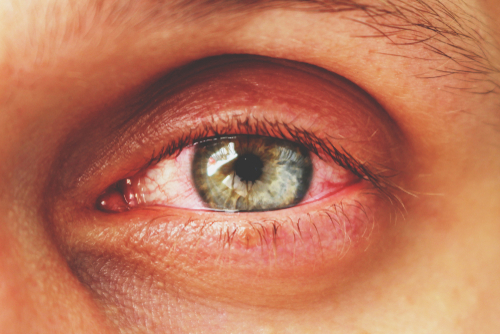Do You Have Dry Eye Syndrome or Meibomian Gland Dysfunction?

Having dry, irritated, and sensitive eyes can be frustrating. It’s hard to see clearly and concentrate on your work or daily activities.
Could it be something more severe than seasonal allergies? If you haven’t had your eyes checked recently, you could have a treatable eye condition.
Dry eye syndrome and meibomian gland dysfunction or MGD affect millions of people every year. These similar eye conditions are common reasons why many seek professional help to treat their dry eyes.
Keep reading to learn the difference between the two and find out which one might be affecting your eyesight.
Dry Eye Syndrome
Dry eye syndrome is an eye condition that mainly affects the tear production inside your eyes. Dryness occurs because your eyes aren’t producing enough tears.
Your eyes don’t have enough tears to stay moist, leading to inflammation and eye surface damage if left untreated. Eye infections and vision loss are severe complications from dry eye syndrome.
Symptoms of dry eye syndrome include:
- Burning
- Stinging
- Mild irritation
- Redness
- Blurred vision
- Excessive tearing
- Foreign sensation in your eye
- Heavy eyelids
- Eye discharge
- Sensitivity to light
Driving at night may be more challenging because you can’t see correctly or get blinded by oncoming headlights.
This common eye disorder can occur because of hormone changes, an autoimmune disease, or inflamed eyelid glands. It could also have a link to a medical condition, certain medications, contact lenses, or aging.
Meibomian Gland Dysfunction
Your tears contain three essential ingredients, water, mucus, and oil. Each component has a crucial function for your eyes, and if one element is lacking, problems occur.
Meibomian gland dysfunction or MGD is a common eye condition that causes an oil shortage in your tears. A blockage in the glands in the rims of your eyelids, called the meibomian glands, is at fault.
The oil prevents your tears from evaporating before they can nourish your eyes. MGD causes a shortage of oil, and as a result, your tears evaporate faster than usual.
MGD has similar symptoms to dry eye syndrome because both produce the same result, dry eyes. Also, both of these eye conditions are treatable once diagnosed.
How Do You Treat Dry Eyes?
Prescription eye drops and changing from medications that cause dry eyes may help relieve your symptoms. But there are other treatments if those simple fixes do not resolve the issue.
For dry eye syndrome, punctal plugs can be very helpful when you are not producing enough tears. Punctal plugs plug your tear ducts to keep tears inside your eye longer.
If you have MGD, a treatment like LipiFlow may be more beneficial. Lipiflow uses warm heat and gentle pulses to unclog your meibomian glands. This unclogging results in more oil present in your tears to prevent evaporation.
Also, you can take precautions to prevent extra irritation and help your eyes feel better. First, protect your eyes from smoke, dry air, and other environmental irritants.
You can also use a humidifier to add moisture to the air in your home and office. If you use a computer for work, take breaks to rest your eyes to blink, and look away from the screen from time to time.
Apply a warm compress over your eyes or use lubricating eye drops whenever your eyes feel itchy and dry. And drink plenty of fluids and add Omega-3 to your diet to help your eyes with your diet.
Do you think you may have one of these eye conditions? Schedule an appointment at Pinke Eye Center in Shelton, CT, get relief for your dry, irritated eyes!


